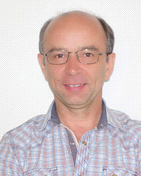报告时间:2022年5月18日15:00-16:00
报告地点:腾讯会议(Tencent Meeting)
会议ID:683 538 408
报告人: Gilbert Teyssèdre
工作单位:法国国家科学研究中心(CNRS)
举办单位:BETVLCTOR伟德官方网站
报告人简介:

Gilbert Teyssèdre, born in 1966, received his Engineer degree in materials physics and graduated in solid state physics in 1989 at the INSA, Toulouse, France. Then he joined the Solid State Physics Lab in Toulouse and obtained the Ph.D. degree from Paul Sabatier University in 1993 for work on ferroelectric polymers. His research activities concern the development of luminescence techniques in insulating polymers with focus on chemical and physical structure, degradation phenomena, space charge and transport properties. He is currently Senior Researcher at CNRS. He has been head of the Solid Dielectrics and Reliability group at Laplace from 2004 to 2015. He has held numerous governmental and industrial research grants in the field of electrical insulation and has co-authored over 160 contributions to scientific journals and book chapters and 230 conference proceedings. He is member of the scientific committee of several conference series as CEIDP since 2016, ICD, ICEMPE, and JiCable. He is Associate Editor of IEEE Trans. Dielectr. Electr. Insul (2021-).
报告简介:
HVDC energy links are being developed throughout the world with ever increasing voltages. Although there are obvious advantages with DC over AC such as the lesser exposure to partial discharge activity, designing dielectric materials for DC stress is more tactful than for AC. In this presentation we shall illustrate the point of field distribution estimation in plaque sample, in cable geometry, dealing with thermal gradients. We will illustrate the limitations of macroscopic models to account for field distribution and point to space charge effects. The criteria used for materials merit comparison based on space charge measurements will be presented. Finally, challenges ahead as well as the different family of materials for extruded cables will be addressed.
文 赵玉顺 审核 赵吉文


